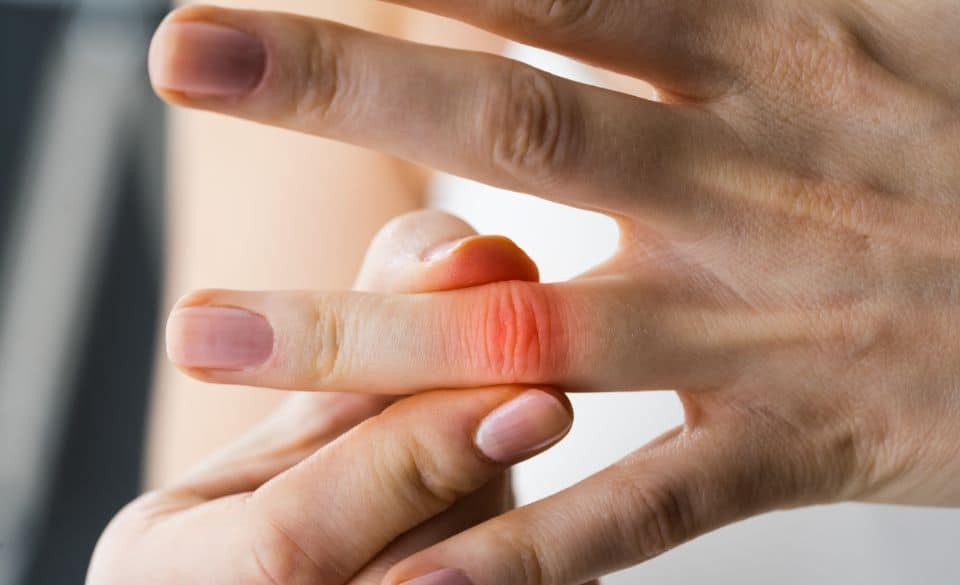
What Causes Finger Pain After Running
Page Contents
As a runner, you’re probably familiar with the aches and pains that come with regular exercise. However, if you’re experiencing finger pain after running, you might be wondering what’s causing it and how to prevent it. Here’s what you need to know:
What Causes Finger Pain After Running
Finger pain after running can be a result of multiple factors. One of the most common causes is poor form while running. If you’re gripping your hands too tightly, it can lead to tension in your fingers and hand muscles, resulting in pain. Another cause can be repetitive stress on the hands, especially if you run frequently or for long distances. This can cause micro-trauma in the tissues, leading to pain.
In some cases, finger pain after running can be a symptom of an underlying medical condition such as arthritis or carpal tunnel syndrome. In a study published in the journal Clinical Biomechanics, researchers found that runners with arthritis were more likely to experience pain and discomfort in their fingers after running. The study also found that runners who had carpal tunnel syndrome were more likely to have pain and numbness in their fingers after running.
In addition to these factors, running in cold weather can also cause finger pain. Cold temperatures can cause constriction of the blood vessels in your fingers, leading to decreased blood flow and oxygen supply to your fingers. This can result in pain and discomfort in your fingers after running.
Overall, it’s important to pay attention to your form and hand positioning while running, as well as taking appropriate measures to protect your hands in cold weather. If you continue to experience finger pain after running, it’s important to consult with a healthcare professional to rule out any underlying medical conditions.
Ways To Prevent Finger Pain After Running
Fortunately, there are several ways to prevent finger pain after running. One of the most important things to do is to focus on your hand position while running. Try to keep your hands relaxed, with your fingers slightly curled but not clenched. This can help prevent tension and strain in your hand muscles, reducing the risk of pain and discomfort.
In addition to focusing on your hand position, you may want to consider wearing gloves or mittens while running. This can help protect your hands from cold temperatures, which can cause constriction of the blood vessels and lead to pain and discomfort in your fingers. A study published in the Journal of Hand Surgery found that wearing gloves can significantly reduce the risk of hand and finger injuries in runners.
Another effective way to prevent finger pain after running is to strengthen your hand and forearm muscles. This can help improve your grip strength and reduce the risk of strain and tension in your hands while running. A study published in the Journal of Strength and Conditioning Research found that hand and forearm muscle strengthening exercises can significantly improve grip strength and hand function in runners.
Finally, it’s important to make sure you’re wearing appropriate footwear while running. Poorly fitting shoes or shoes that are worn out can cause your feet to pronate or supinate, which can lead to compensatory movements in your hands and fingers. This can cause strain and tension in your hand muscles, resulting in pain and discomfort. Make sure to invest in high-quality, properly fitting running shoes to help prevent finger pain and other injuries.
In summary, preventing finger pain after running involves focusing on your hand position, wearing appropriate gloves or mittens, strengthening your hand and forearm muscles, and wearing appropriate footwear. By taking these steps, you can help reduce your risk of finger pain and other injuries while running.. Here are a few things you can try:
Relax your hands: Be conscious of your grip while running and try to keep your hands relaxed. You can also try shaking out your hands periodically to release tension.
Hydrate: Drink plenty of water before, during, and after your runs to help prevent dehydration.
Stretch: Stretching your hands and fingers before and after your runs can help prevent tightness and pain.
Wear gloves: Wearing gloves can help cushion your hands and reduce pressure on your fingers while running.
How To Reduce Finger Swelling After Running
Finger swelling after running is not uncommon, especially if you are a long-distance runner or if you engage in activities that require a lot of hand movements, such as weightlifting or rock climbing. However, there are several things you can do to reduce finger swelling and discomfort after running.
One of the most effective ways to reduce finger swelling after running is to practice hand elevation. This involves raising your hand above your heart level, which can help reduce inflammation and swelling. A study published in the Journal of Plastic, Reconstructive and Aesthetic Surgery found that hand elevation can significantly reduce swelling in the hand and fingers after surgery.
Another effective way to reduce finger swelling after running is to use cold therapy. This involves applying a cold compress or ice pack to your fingers for 10 to 15 minutes at a time, several times a day. Cold therapy can help reduce inflammation and swelling, as well as alleviate pain and discomfort. A study published in the Journal of Athletic Training found that cold therapy can significantly reduce swelling and improve hand function after exercise-induced injury.
In addition to hand elevation and cold therapy, you may want to consider taking nonsteroidal anti-inflammatory drugs (NSAIDs) to reduce inflammation and swelling. However, it’s important to talk to your doctor before taking any medication, as some NSAIDs can have side effects and may not be appropriate for everyone.
Finally, it’s important to rest your hands and fingers after running or engaging in other activities that involve a lot of hand movements. Overuse of your hand and finger muscles can lead to strain and tension, which can contribute to inflammation and swelling. Make sure to take breaks and stretch your hands and fingers regularly to help reduce the risk of swelling and other injuries.
Conclusion
Finger pain after running can be a frustrating and uncomfortable experience, but with the right preventative measures, you can help reduce your risk of developing it. By focusing on proper form, staying hydrated, and taking care of your hands and fingers, you can continue to enjoy your runs without pain or discomfort.


